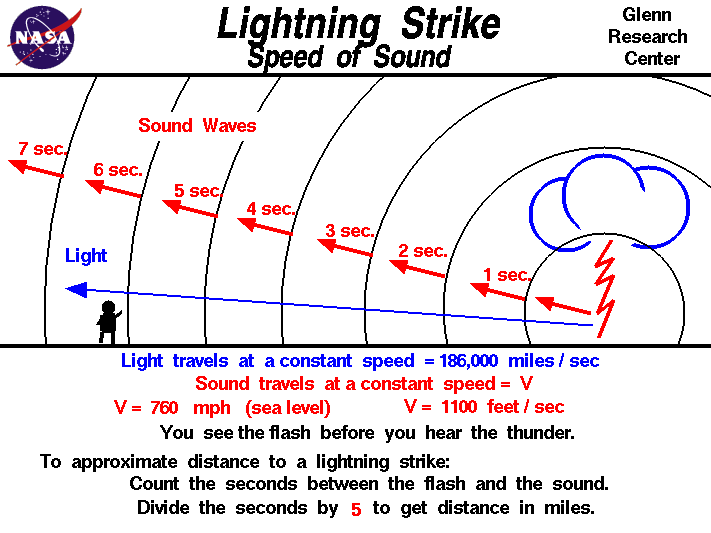You are using an out of date browser. It may not display this or other websites correctly.
You should upgrade or use an alternative browser.
You should upgrade or use an alternative browser.
Why does science tell us that light speed is faster than sound? It's the opposite
- Thread starter Mess World
- Start date
More options
Who Replied? da fukk
da fukk 
can u explian ...
why when this shyt happens

....... 30 seconds later u hear it




Mess World
☭☥☤☮☯ψ
da fukk

can u explian ...
why when this shyt happens

....... 30 seconds later u hear it

Thats not sound from
The lightening you hear when it thunders people just think that
Lightening doesn't make noise it heats up the air molecules till they expand
Brown_Pride
All Star
Brown_Pride
All Star
William Robertson and colleagues from Middle Tennessee State University in the US have managed to produce "faster than light" sound, however, by putting a sound pulse through a surprisingly simple waveguide. Inside, a loop filter splits the signal along two unequal length paths, and then recombines it to produce large amounts of anomalous dispersion. As they interfere with each other, they replicate the shape of the original pulse, only farther ahead. This gives the impression that the sound has travelled farther, and thus faster, in the same space of time.
Robertson says that such split-path interference can also occur naturally when a sound source is located near a hard wall: some of the sound reaches the listener directly, and some reaches the listener from a slightly longer path as it bounces off the wall. Therefore, he says, superluminal sound is an "everyday" occurrence, although it is mostly too subtle to notice.
Proponents of Einstein's special relativity need not worry, though. The underlying waves that make up the pulse remain at subluminal velocities, so no information, matter or energy actually travels faster than light. (See related link: "Subluminal".)
"The effect is the same as that observed in previous electrical or optical experiments," Robertson told Physics Web. "The only somewhat startling difference is that the acoustic waves making up the pulse move so much more slowly than light."
Did you even read your own shyt?
Mess World
☭☥☤☮☯ψ
The reason. It takes longer to hear thunder is because the air takes longer to heat up and expand than when the flash hits
Mess World
☭☥☤☮☯ψ
Any sound you hear is made up of vibrations. The vibrations travel as a sound wave through the air, until they reach your ear. Lightning is a huge discharge of electricity, and this electricity shoots through the air, causing vibrations to be formed in two ways:
1. The electricity passes through the air and causes air particles to vibrate. The vibrations are heard as sound.
2. The lightning is also very hot and heats up the air around it. Hot air expands, and in this case the air expands very quickly, pushing apart the air particles with force and creating more vibrations.
This is what we hear and call thunder – the rumbling of thunder is simply caused by the vibration or sound of the air affected by lightning. If you’re nearby to a lightning strike, you may have heard thunder as a really loud crack, almost like the sound of a whip being cracked. But, most of the time we hear thunder as a loud, long rumble.
In fact, the crack sound is the direct sound of the lightning near us, reaching our ears. The more common rumbling effect happens when thunder echoes off objects all around us. This happens a lot in towns and cities, where there are lots of buildings for the noise to bounce off. However even in flat areas of land, with no trees or other objects, there is quite often a rumble as the thunder simply bounces off the ground on its way to our ears. All this echoing transforms the original ‘crack’ sound into a longer ‘rumble’!
1. The electricity passes through the air and causes air particles to vibrate. The vibrations are heard as sound.
2. The lightning is also very hot and heats up the air around it. Hot air expands, and in this case the air expands very quickly, pushing apart the air particles with force and creating more vibrations.
This is what we hear and call thunder – the rumbling of thunder is simply caused by the vibration or sound of the air affected by lightning. If you’re nearby to a lightning strike, you may have heard thunder as a really loud crack, almost like the sound of a whip being cracked. But, most of the time we hear thunder as a loud, long rumble.
In fact, the crack sound is the direct sound of the lightning near us, reaching our ears. The more common rumbling effect happens when thunder echoes off objects all around us. This happens a lot in towns and cities, where there are lots of buildings for the noise to bounce off. However even in flat areas of land, with no trees or other objects, there is quite often a rumble as the thunder simply bounces off the ground on its way to our ears. All this echoing transforms the original ‘crack’ sound into a longer ‘rumble’!
Brown_Pride
All Star
...i know. This, however; doesn't explain ...you know what NVM.The reason. It takes longer to hear thunder is because the air takes longer to heat up and expand than when the flash hits

Mess World
☭☥☤☮☯ψ
I will at the very least entertain this for a moment to see if there is some substance
I do believe that all things are composed of sound and it is the building block of the universe
If you know about Kemetic science and how they say the Big Bang came from the sound of Ptuh in the waters of Nun which sparked Atum/Atom/Adam then you know that sound is the key, sound is waves and vibrations , melanin is rhythm that picks up vibrations.
Mess World
☭☥☤☮☯ψ
No one boards here because everyone is closed minded and would rather watch the news all day then take time to read or learn
.༼-◕_◕-༽.
.༼-◕_◕-༽.

Air is a gas, and a very important property of any gas is the speed of sound through the gas. The speed of "sound" is actually the speed of transmission of a small disturbance through the gas. Sound is a sensation created in the human brain in response to sensory inputs from the inner ear. The speed of sound through the atmosphere is a constant that depends on the daily temperature. On a standard day at sea level static conditions, the speed of sound is about 760 mph, or 1100 feet/second. We can use this knowledge to approximately determine how far away a lightning strike has occurred.
When lightning strikes, a bright flash of light is generated. Light travels at a constant 186,000 miles/second, which means that we see the flash immediately as it happens. The intense heat of the lightning generates a sound called thunder which is transmitted through the air at the speed of sound. Because the speed of sound is so much slower than the speed of light, we always see the flash before we hear the thunder.
On the figure, we show the sound waves that are generated by a lightning strike. The waves move at about 1100 feet/second. How far has the wave moved from the lightning strike after 2 seconds? We can use a rate equation to solve this problem:
d = s * t
distance d equals speed s times time t. In 2 seconds, at 1100 feet/second, the wave has moved 2200 feet. How far does it travel in 5 seconds? 5500 feet which is just a little over a mile (1 mile = 5280 feet). So, since the flash reaches our eyes instantly, if we count the number of seconds between the flash and when we hear the thunder, we can approximate the distance to the lightning strike:
d = 1100 * t (distance in feet)
Or, if we divide by 5280 feet/mile:
d ~= t / 5 (distance in miles)
Try it out during the next thunderstorm! But take shelter if the time is less than a couple of seconds!
Activities:
Guided Tours


